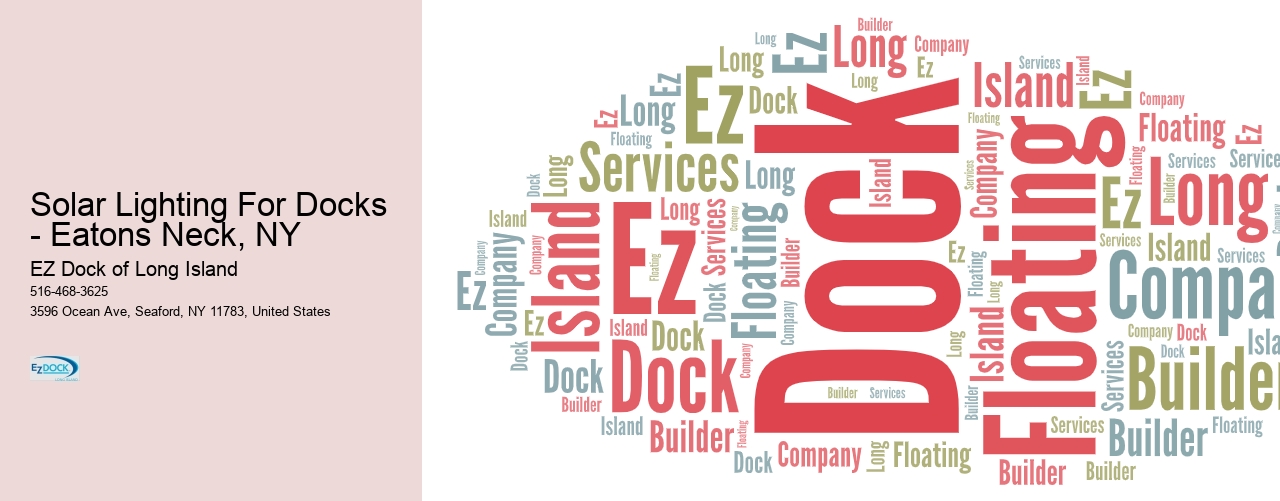

EZ Dock of Long Island has been proudly serving Long Island’s waterfront communities for over 15 years, evolving from a personal watercraft service and marina into a leading provider of innovative floating docking solutions. Our modular dock systems are perfect for residential, government, and commercial applications, offering flexibility for future expansion. From PWC ports to kayak launches, boat lifts, ramps, and more, we provide custom solutions to enhance your waterfront experience.
When storing your watercraft on a dock, it’s crucial to select an appropriate spot. You want to ensure that the location is sheltered from harsh weather conditions and strong currents that could damage your vessel. Ideally, choose a part of the dock where wave action is minimal and away from high-traffic areas to avoid collisions with other boats.
Position your watercraft parallel to the dock in a manner that allows for easy access. There should be enough space between your boat and others moored nearby to prevent scratches or dings. Additionally, if you’re docking in tidal waters, account for changes in water level; this will prevent your craft from resting on the dock or getting stuck at low tide.
Securely tie your watercraft using high-quality marine-grade dock lines. Use bow and stern lines to keep it from moving forward or backward, and spring lines to prevent shifting sideways. The knots should be well-practiced like cleat hitches which are reliable yet easy to untie when necessary.
Fenders act as cushions between your boat and the dock, absorbing shock and preventing damage. Hang fenders at points where the boat is likely to make contact with the dock, adjusting their height so they meet the dock at its widest beam. This strategy is essential for protecting both your vessel's finish and integrity.
Periodically inspect all equipment used for docking including lines, fenders, cleats, and any other gear. Look out for signs of wear such as fraying ropes or deflated fenders which could compromise safety if left unaddressed. Replace damaged items immediately to maintain a secure storage environment for your watercraft.
If you plan on storing your watercraft at the dock long-term, additional measures may be needed such as using a cover to protect against sun damage or installing a lift to keep it out of the water altogether when not in use. Regular cleaning will also help prevent fouling organisms from attaching themselves to the hull which can affect performance and longevity.
View Floating Dock Company - Suffolk County in a full screen map
| Service Areas | Amityville, NY; Asharoken, NY; Babylon, NY; Bay Shore, NY; Bayport, NY; Bellport, NY; Blue Point, NY; Brightwaters, NY; Bridgehampton, NY; Brookhaven, NY; Center Moriches, NY; Centerport, NY; Cold Spring Harbor, NY; Copiague, NY; Cutchogue, NY; East Islip, NY; East Marion, NY; East Moriches, NY; East Quogue, NY; East Rockaway, NY; East Setauket, NY; Eastport, NY; Eatons Neck, NY; Flanders, NY; Greenport, NY; Great River, NY; Hampton Bays, NY; Huntington, NY; Islip, NY; Jamesport, NY; Lindenhurst, NY; Lloyd Harbor, NY; Mattituck, NY |
| Entity | Definition |
|---|---|
| Boat Dock | A structure that provides a place for boats to be secured when not in use. |
| Residential Floating Dock | A floating dock system designed for private residential use, often for recreational purposes. |
| Commercial Floating Dock | A floating dock built for commercial purposes, such as marinas or rental operations. |
| Kayak Dock | A dock system designed specifically for launching and docking kayaks. |
| Pontoon Dock | A floating dock system that uses pontoons to stay afloat, often used for boats or as a swim platform. |
EZ Dock" width="853">
Before the winter chill sets in, it's crucial to give your dock a thorough inspection. Check for any wear and tear that may have occurred during the summer months. Look out for loose boards, damaged flotation devices, rusted hardware, or any other components that may need repair or replacement. Once you've identified areas that require attention, clean the dock thoroughly to remove algae, bird droppings, and accumulated debris. Cleaning not only helps maintain the dock's condition but also allows you to see potential problems more clearly.
After cleaning and repairs, focus on securing all items on your floating dock. This includes ladders, benches, storage boxes, and any water toys or accessories that are typically left on or around the dock during the summer season. Remove these items from the dock to prevent them from being damaged by ice and snow or potentially becoming hazardous projectiles in stormy weather. Store them safely indoors or in a secure outdoor location where they are shielded from winter elements.
Winter often brings fluctuating water levels which can be detrimental to stationary docks; however, floating docks have an advantage as they adapt naturally to changes in water level. Despite this flexibility, it's wise to anticipate ice formation around your dock which can lead to damage if not properly managed. If necessary, adjust the height of your floating dock or reposition it to a safer location where ice movement is less severe. Make sure that anchor lines are taut and anchors are firmly placed to avoid shifting due to frozen conditions.
Finally, consider additional protective measures such as bubblers or de-icers which keep water moving around your dock preventing hard ice from forming directly against it—a process that can cause significant damage over time. These devices are especially useful in regions with harsh winters where thick ice is common. After setting up these systems, cover exposed parts of your dock with protective materials like foam padding or specialized coverings designed for marine applications which will add an extra layer of defense against frigid temperatures and ice buildup.
By following these steps diligently each year before winter arrives, you'll ensure your floating dock remains intact and ready for enjoyment when warmer weather returns.